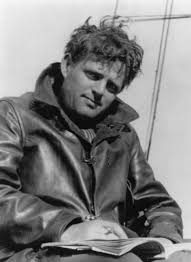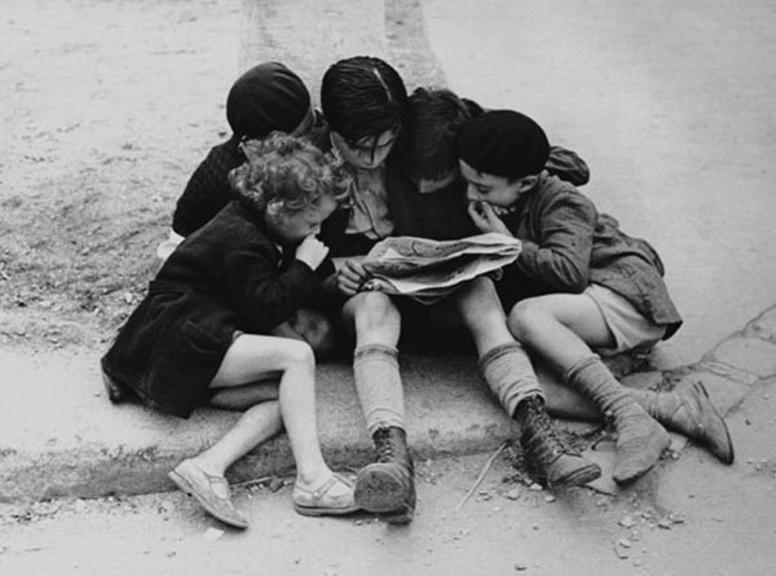Damon Runyon
New York American/February 16, 1917
Nate Lewis, the bald eagle of Michigan Boulevard, has a mighty unique theory concerning Fred Fulton.
Nate is manager of Charley White, the lightweight, and of Carl Morris, the Sapulpa Sapling. He is one of the very few managers we have ever encountered who can talk about a fighter not an inmate of his personal garage. It is a pleasing trait.
“Fulton is a wonderfully improved fighter,” said Nate yesterday. “Most of the improvement has come within the last few months. It is very tough picking. I’ll venture to say there were days when Fred did not know how he was going to get the next meal for his family and for himself.
“Naturally he was constantly worried, and pretty much discouraged. Then he got hold of a little money, and was able to provide for his folks. The cloud of worry lifted, the plasterer immediately began showing improvement in form. He fought with more zest. He was able to concentrate his mind on the business at hand, and the result is apparent.
“To my way of thinking, Fulton is one of the most graceful fighters we have ever had,” continued Nate. “He is the very acme of pugilistic grace. I mean when he is in action, of course. Outside the ring he looks like a big hick. Inside of it he is the perfection of form. He is what I call a great fistic stylist. Of course I think Morris can beat him because he has done it before, but that opinion detracts nothing from Fulton’s form.”
Ol’ Jeems Flynn
Walter Travis, the grand old man of golf, has retired, but Eddie Plank, the Travis of baseball, and Jim Flynn, the Plank of pugilism, are going on.
In the thirty-eighth year of his age, and in the sixteenth year of his fighting service, Flynn stops one of the toughest and most promising young heavyweights that has come along in some time, and does it in a single round, too.
Pretty good for an old boy with age-brittled hands, and a couple of hundred bitter battles behind him, hey, what?
Jack Dempsey, the fellow Jim knocked cold out in Utah the other night, weighs over 200 pounds. He is about six feet, one or two inches tall, and perhaps twenty-two years old. He came on here some months ago and bested Andre Anderson and John Lester Johnson in ten-round bouts.
Andrew wasn’t much, but John Lester Johnson is that slippery slashing Harlem black that few heavyweights care to tackle. He is the Levinsky of the colored brigade. John, the Barber, thought so well of Dempsey that he signed him to a contract, which Dempsey promptly broke, returning to his old Utah home.
He came on here again, and made up with John, the Barber, just a few weeks back, only to once more do a lammister after John had dressed him up like a horse and buggy and ironed the wrinkles out of his stomach.
Flynn arrived here a couple of weeks ago from Missouri expecting to fill some Eastern engagements but was loaded right back on the train the next day and sent to Utah to fight Dempsey, so he had little time to get ready. Many of our fistic folk figured the aged one a mere set-up for Dempsey, but instead James proved a set-down, also a set-back.
Our Aged Athletes
Of course, Jim is not really old in years, but thirty-eight figures pretty close to senility in an athletic way. He is probably now the oldest man actively pursuing the fistic pastime.
He is four years younger than Eddie Plank, and began fighting the same year that the Gettysburg man took up his first professional engagement—1901. Plank was then twenty-five years old, and Jim was twenty-one, both making rather late starts on their athletic careers.
Honus Wagner is rising forty-three, and he got going in a professional way when he was twenty-one years old. Some might argue that the very fact that these men made such comparatively late starts is responsible for their continuing on past the allotted athletic span, because they were physically matured when they began their life work, but you can disprove that theory by a hundred other cases.
The first record of any fighting by Bob Fitzsimmons shows he was eighteen when he started. He made his last appearance in what was reputed to be a regular fight at the age of fifty-two. His ring service covered close to thirty-four years, so Flynn will have to keep going until he has enough long white whiskers to pad a set of ring ropes if he hope to equal that record.
Nap Lajoie closed out a twenty-year stretch in the big league last season, and is taking up a minor league managerial career. He should continue down there as an active layer for some years to come, and he is now as old as Plank. Beside these chaps Jim Flynn seems quite youthful, but he is none the less the grand old man of fistiana.
Jones Blows Up
Tom Jones listened, and listened, and listened yesterday.
He had a violent cold. He could scarcely raise his voice above a whisper. This explains T. Jones in the singular role of listener.
He had his large, shrapnel-shell-like ear pasted to many a crack and keyhole in the doorways of pugilistic discussion during the course of the day, eavesdropping on the bag punchers of fistiana as they put their heads together and talked of this, and that, and these, and those.
And all that T. Jones could hear as he listened and listened, and listened, were rumors to the effect that Jess Willard is in for a plastering at the union hands of Fred Fulton, if the behemoths ever crash together.
Finally, Thomas could stand it no longer. He rushed to a drug store and poured cough syrup, quinine, and aspirin into himself. Gradually the words which had been coagulating inside of him for hours loosened up. Presently they came gushing forth in flocks.
Stand aside, men!
Hear the membraneous mumblings of T. Jones!
“I’ll bet anybody here right now that Willard stops Fulton in eight rounds,” he gurgled. “Eight rounds! Remember! Did I say eight? I’ll correct that. Fulton will not go four rounds! That’s how good I think your new sensation is compared to Jess Willard! Bet me, somebody. Please bet me!”
And the rest was silence.
The works of Damon Runyon and other American journalists are now freely available at The Archive of American Journalism. Visit our bookstore for single-volume collections–-ideal for research, reference use or casual reading.

